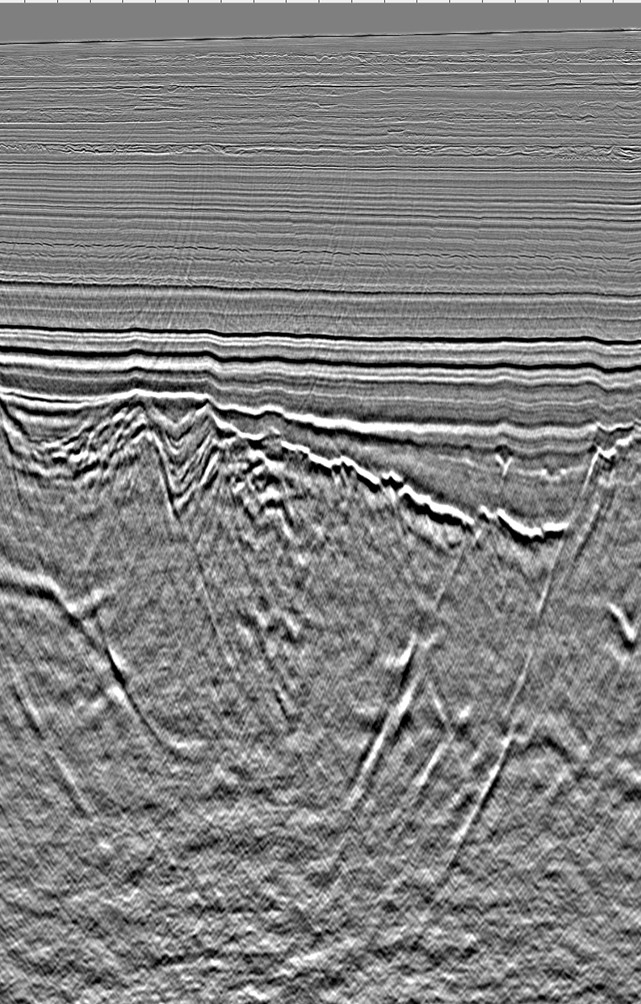Volatile hydrocarbon prices are driving major changes in the industry. Companies are establishing new economic baselines and new criteria for evaluating exploration, exploitation and development opportunities. With risk reduction paramount to overall investment return, access to new data and information is more important than ever. In the exploration world, this means looking to analogues as the basis for forming new prospects and play fairways.
Nowhere has this become more prevalent than offshore Mexico. Having undergone an energy reform, Mexico offers new exploration and development opportunities in a basin with well-known analogues, the U.S. Gulf of Mexico (GoM). On an aerial comparative, the U.S. GoM covers an estimated 695,000 sq km (268,341 sq miles) vs. the Mexican GoM, which covers an estimated 825,000 sq km (318,534 sq miles). Compare this to drilling activity and densities in the respective areas. In waters less than 100-m (328-ft) deep, there are an estimated 14,478 wells in the U.S. vs. 474 on the Mexican side. In waters deeper than 100 m, the numbers become more staggering, with 4,204 exploration wells in the U.S. and only 117 in Mexico. The opportunity here is immense.
In terms of active petroleum systems, the GoM (U.S. and Mexico) is considered one sedimentary basin from source to sink. Although differences do exist, such as the Chicxulub impact crater and disproportionate carbonate reservoirs, it is the similarities (analogues) that should drive early drilling and exploration opportunities. Early activity is expected as a natural extension of conventional salt basin exploration to Mexico (offshore southern Mexico in the southeastern basins and Campeche-Sigsbee Isthmus salt basin and offshore northern Mexico in the Perdido and Salina del Bravo basins). This new activity will benefit from the seismic wow factor established by two decades of advancements in acquisition and imaging for salt and subsalt formations. On the acquisition end, the ability to select made-for-purpose acquisition configurations (narrow-azimuth, wide-azimuth and full-azimuth) presents significant gains vs. early U.S. GoM exploration. On the imaging front, faster information delivery cycle times are being achieved through significant investment and advancements in hardware and compute capacity. These strides, coupled with advanced applications such as various prestack data-conditioning options, improved velocity analysis and assorted migration applications, are contributing to superior interpretations. Combining the advancements in acquisition and imaging will lead to improved de-risking and optimized prospect and play fairway definition.
So with all this new technology, what is most exciting? As with most emerging sedimentary basins, new data and information lead to new interpretation and understanding. This is the seismic wow factor. Much of offshore Mexico is located in nonsalt provinces, which is equivalent to the abyssal plain region of the U.S. GoM, primarily the Lund and Henderson protraction areas south of the Sigsbee salt edge. Although no drilling has occurred in this region, the data in Figure 1 provide unprecedented views of what is to come. New images of what is believed to be thickening (2,000 m to 3,000 m [6,562 ft to 9,843 ft]) of Jurassic-aged sediments will lead to new interpretations and hydrocarbon assessments. Of additional note in Figure 1 is what is now classified as intracrustal features between basement and oceanic crust. Although limited studies have been conducted on the seismic reflectivity in this zone, new images (shown in the figure) provide insight to basin forming and evolution aspects. This insight will lead to new interpretations of basin-forming events, the nature and timing of sediment deposition related to the opening of the GoM, and these events’ impacts on the petroleum systems. Additionally, these new images present the need for greater understanding beneath the salt, an area which historically has been challenging to image.

The geoscience community must identify new sources of hydrocarbon accumulations to supply the long-term demands of society. The seismic wow factor means with new data comes new understanding. These new data will challenge conventional thinking and lead to new and far-reaching opportunities. When the initiative to acquire new seismic data in new unexplored regions is taken, the wow factor is gained.
Happy hunting.
FIGURE 1. A new image from TGS Panfilo 3-D displays the seismic wow factor. (Source: TGS)
Recommended Reading
BlackRock CEO: US Headed for More Inflation in Short Term
2025-03-11 - AI is likely to cause a period of deflation, Larry Fink, founder and CEO of the investment giant BlackRock, said at CERAWeek.
Stonepeak Backs Longview for Electric Transmission Projects
2025-03-24 - Newly formed Longview Infrastructure will partner with Stonepeak as electric demand increases from data centers and U.S. electrification efforts.
Michael Hillebrand Appointed Chairman of IPAA
2025-01-28 - Oil and gas executive Michael Hillebrand has been appointed chairman of the Independent Petroleum Association of America’s board of directors for a two-year term.
Kissler: Gas Producers Should Still Hedge on Price
2025-03-27 - Recent price jumps and rising demand don’t negate the need to protect against future drops.
Confirmed: Liberty Energy’s Chris Wright is 17th US Energy Secretary
2025-02-03 - Liberty Energy Founder Chris Wright, who was confirmed with bipartisan support on Feb. 3, aims to accelerate all forms of energy sources out of regulatory gridlock.
Comments
Add new comment
This conversation is moderated according to Hart Energy community rules. Please read the rules before joining the discussion. If you’re experiencing any technical problems, please contact our customer care team.





